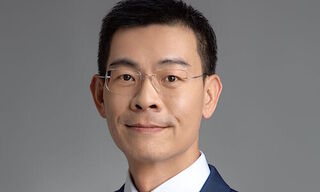Asia is ripe for an institutional crypto boom as the region has multiple tailwinds at play, including regulatory clarity and broad-based adoption.
Crypto markets have been on the rise as of late. Since October 2023, Bitcoin’s price has soared by more than 70 percent to over $46,000. Other major tokens have also seen similar price surges during this period.
In turn, there is growing interest from the financial sector to ramp up related activities. Asia is expected to be a major beneficiary due to a number of supportive drivers. This applies not only to the broader market but specifically to institutional adoption both by newly emerging fintech companies as well as traditional financial institutions.
Regulatory Clarity
One of the key drivers of institutional adoption is predictability, especially with regard to regulation. In contrast with the US, Asia has provided greater regulatory clarity with market watchdogs demonstrating growing maturity and understanding about the nascent digital asset class. And the region has benefited from this difference.
«In the first iteration, regulators [in Asia] were beginning to get familiar with the asset class, the risks and how to control trading outside their jurisdiction. Now, there is a much greater understanding,» said Julian Sawyer, CEO of Zodia Custody, which is backed by Standard Chartered. «It's a shame that the United States is not on this journey and I think people find that Asia is filling the void incredibly well.»
«One major growth driver for us has been the movement of assets from unregulated entities to regulated entities,» added Mathias Imbach, co-founder of crypto firm Sygnum, highlighting headline failures from some of the major exchanges. «If you hold crypto with Sygnum, it is off-balance sheet. Many people are very happy with this arrangement because they are familiar with the Chapter 11 proceedings by now.»
Broad Adoption
In terms of market demand, Asia is already a leader. According to Chainalysis, nine out of the top 20 countries in its crypto adoption index for 2023 were based in the region with India at the leading position. Another crypto adoption index by Henley & Partners placed Singapore in the top rank.
The adoption trend is not only occurring at the grassroots level but also amongst wealthy individuals and family offices, according to Amy Yu, APAC CEO of Zug-based Seba, which was recently rebranded to Amina Bank.
«We also see demand in Asia from wealthy private individuals and family offices, especially for discretionary mandates,» said Yu. «We intend to work with some private banks in the segment who choose to collaborate with us.»
Institutional Developments
In addition to newly established fintech firms, traditional financial institutions are also joining the race. Some, like Standard Chartered, prefer to enter the crypto market by investing in a separate, dedicated business like Zodia Custody.
Others are directly putting their name on the line. In November 2023, Geneva-based Bordier & Cie signed a partnership with Sygnum to leverage its digital asset capabilities in Singapore. DBS was an early mover in this space after launching its own digital asset exchange in 2020.
«Whether we like it or not, digital assets are going to be a significant source of wealth creation,» Julius Baer Asia CIO Bhaskar Laxminarayan told finews.asia, underlining the key industry trend of grappling with onboarding clients with digital assets. «Some believe that pure fintech companies will beat traditional banks in this space. I haven’t seen any proof of this yet but time will tell.»
ETF Boost
Even for conservative financial institutions, there will be potential gains to be made from the highly anticipated approval of spot crypto exchange-traded funds in the US this year. Banks like UBS and HSBC have already reportedly added such ETFs to their product shelves.
«The adoption of traditional structures to build crypto exposure is a very important step for the asset class to enter the mainstream,» said Sygnum co-founder Gerald Goh. «While the majority of crypto investors have been buying and selling directly, the bulk of fund flows traditionally goes through funds rather than direct investment.»


























